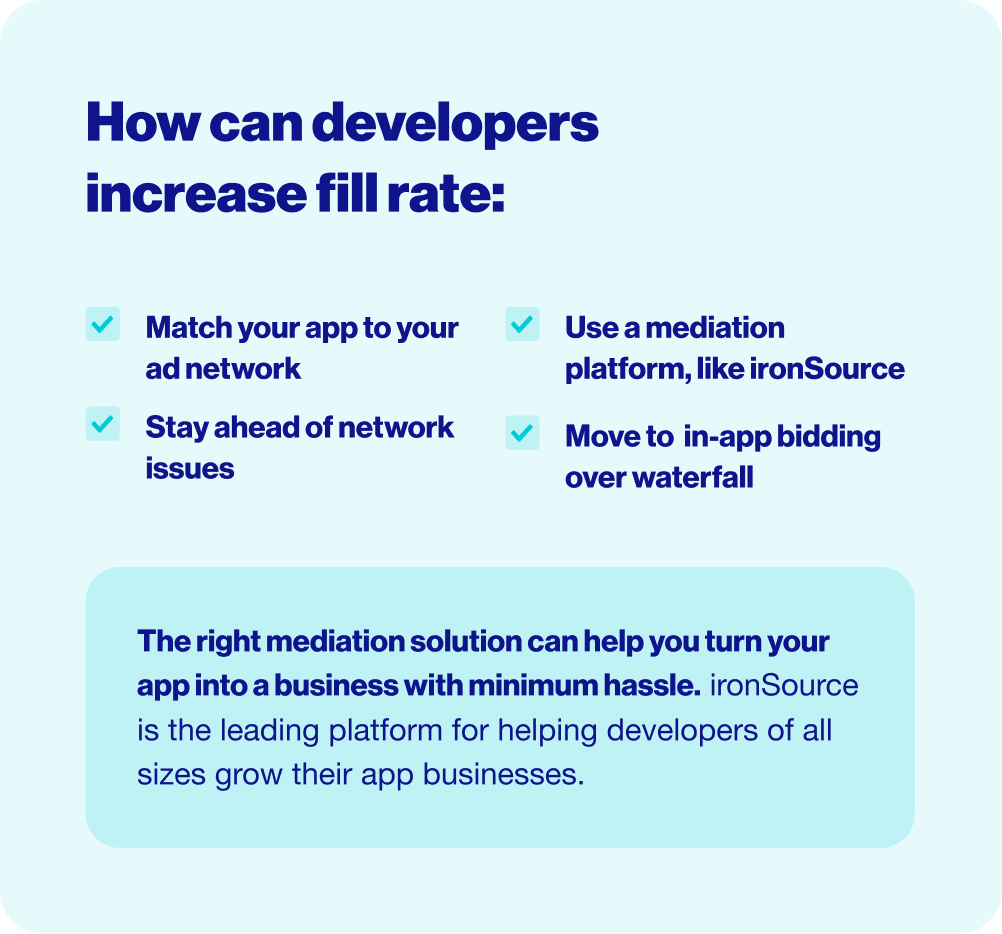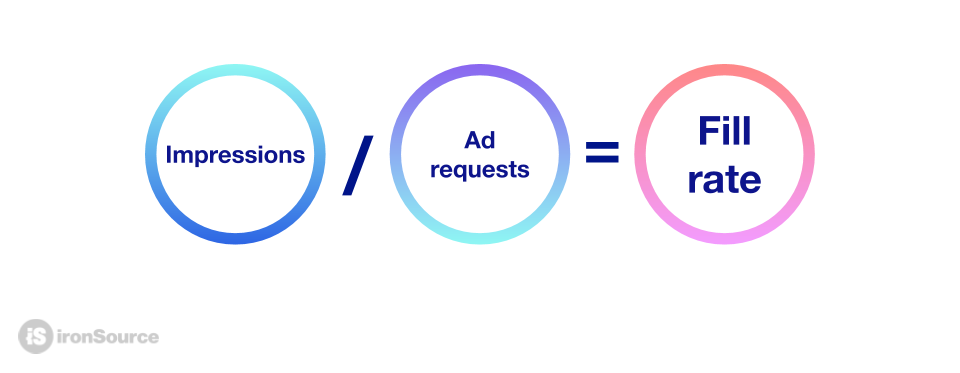What is ad fill rate and how can app developers increase it?

What is fill rate for ads?
In the mobile monetization world, fill rate is an important metric for gauging an ad network’s performance. It tells app developers how good that network is at filling ad requests. So what does it mean exactly?
Fill rate is the percentage of ad requests that get filled by the ad networks you’re working with. It’s calculated by dividing the number of ad impressions an app actually serves, by the number of times an app requested an ad from a network.

Fill rate advertising
Why is fill rate important for app developers?
For every ad request that doesn’t get filled and every ad not shown to users, app developers lose out on potential earnings. That’s why it’s important to make sure fill rates are always high.
Put simply, higher fill rates mean more ad revenue for app developers.
Ad network fill rate
How can app developers increase fill rate?
In a perfect world, an ad network’s fill rate would be 100% - meaning, every time an app requested an ad from the network, the ad network would send out an ad to show users. However, as we’ll learn below, this isn’t always the case.
That said, there are many ways to ensure that your ad network’s fill rate is as high as possible.
1. Match your app to your ad network
Let’s say your app has a strong user base in India. To ensure a high fill rate, you’d want to make sure that the ad network you partner with has a steady flow of ad campaigns targeted at users in India. If not, there could be times when your users in India don’t see ads, even if your app requested them. In these cases, fill rates would be lowered.
The same goes for ad units. If your app is full of rewarded video ads, you want to ensure that your ad network is partnered with a host of advertisers running rewarded video campaigns.
The clear strategy here is to understand your user base and your ad placements, and find an ad network that best matches those characteristics. Be sure to research your ad network, and find out what ad units they’re best at delivering, and what countries and regions they’re strongest in. If you’re unsure, ask them!
2. Stay ahead of network issues
In addition to geography and ad placements, fill rate can be low because of technical problems, such as a network error on the user’s side which keeps the ad from delivering properly. For example, if a user playing your game suddenly loses WiFi signal, your ad network wouldn’t be able to serve the ad.
That’s why it’s important to partner with an ad network that can determine and monitor the internet connection on the user’s device. ironSource, for example, has a Network Change Status function, which enables the SDK to change its availability according to network modifications. If there’s no network connection, the availability turns to false. But once the user regains connection, the SDK is able to serve the ad.
3. Use a mediation platform and turn on in-app bidding
The best way to increase fill rate is to use more ad networks. If one ad network fails to fill an ad request, it's likely another one will. But while adding more SDKs can increase revenue and fill rate, there's always a chance that in the traditional waterfall model, no ad network in your waterfall is willing to pay the CPM you've preset - in which case, the impression is left unfilled.
That’s why developers are moving to in-app bidding over the traditional waterfall model.
Traditionally, mediation platforms relied on a standard waterfall system to prioritize the order of ad networks. The waterfall system calls the first network on your waterfall, requests to serve an impression for the CPM dollar amount you preset, and uses up its entire ad pool before moving on to the next network.
Meanwhile, in-app bidding functions like an auction, requesting all the ad networks to bid on each impression at the same time - instead of one by one, and without a preset CPM amount that's manually inserted. The network that bids the highest gets to fill the impression.
Because multiple ad networks get the chance to bid on and serve every single impression, there's a higher chance that the impression will be filled - ultimately increasing fill rates.
Wrapping up
An ad network’s fill rate directly affects how much ad revenue app developers earn, making fill rate a critical app metric in the mobile monetization world. With the right partners, however, app developers can ensure they’re not losing out on any potential revenue.



